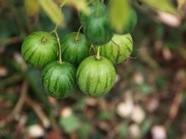
Tr-Tz
TREE SPINACH
See Lamb’s quarter

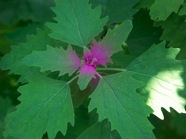
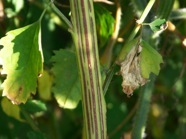
TREE TOMATO
I could have placed this under the name ‘tamarillo’ as well, but I decided to use this name, at least just for now. The name ‘tree tomato’ (cyphomandra betacea) says it all: tomato-like fruits grown on a small tree! These fruits have a sweetish tomato-like taste, and are used the way tomatoes are used.
The plants themselves require a frost-free climate and take at least two years to form some yelow-orange fruits (there are some yellow cultivars as well). They can easily be sown and grown on in a pot.
Some other cyphomandras are cyphomandra abutiloides , or dwarf tree tomato, which produces small edible fruits the first year (see picture), cyphomandra corymbiflora who should stand some frosts, and so on.
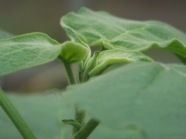
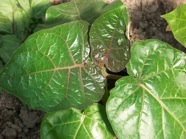
TRICHOSANTHES
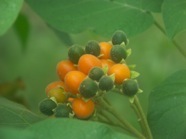
The most grown trichosanthes is trichosanthes cucumerina, also known as trichosanthes anguina. The common name for this one is snake gourd, and that’s what it looks like. The young fruits are eaten a lot in Asian cuisine, they are boiled and added to all sorts of sauces,...
Trichosanthes requires lots of warmth to grow, it can’t be done outside over here. They form long vines , up to three metres and produce a fair amount of fruits.
Some other edible trichosanthes are trichosanthes dioica and trichosanthes kirilowii (which is also grown for the ornamental flowers).
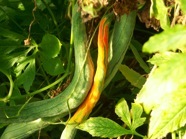
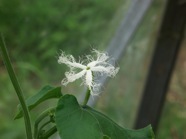
TURKISH ROCKET
I like this one a lot, not for the edible leaves (they have a sharp taste and I prefer them mixed up with other edible leaves), but for the edible flowerbuds, which are a great and tasty broccoli alternative, and they are amazingly productive.
Turkish rocket (bunias orientalis) is a perennial plant, that resseds abundantly, so take care, in some middle-European countries this is slowly becoming a hard to eradicate weed.
The plants have deep roots and resprout from these, they don’ t mind frequent pickings of leaves.
Despite some negative objections, bunias orientalis is one you should have, just don’t let them reseed (so , eat all the flowerbuds, that helps...)
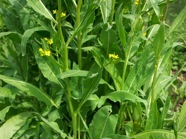
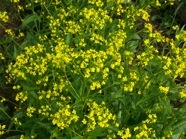
TURNIP
A plant that has been in culture for ages and ages. Turnips aren’t used a lot anymore, and that’s too bad, because they really are a very good and fast-growing crop, and they have a nice taste as well. I especially like the early spring turnips, when not really much is growing in the garden. Most turnips (brassica rapa) have an excellent, sweetish taste, and fit in lots of dishes, and they can also be eaten raw.
Many varieties exist, some are quite winter hardy, while others are mostly suited for autumn or spring harvesting.
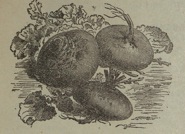

TURNIP GREENS
One of the finest winter vegetables are without any doubt turnip greens, full of taste, prolific and they grow at quite low temperatures. The plants are a form of turnips, but selected for the edible leaves. I sow these in autumn, and make sure they get a good start. The plants develop quickly and are very productive, a weekly pick from about 20 plants isn’t exceptional, even in the middle of the winter. Some varieties have edible turnips as well.
I use the leaves everywhere, stir-frying them is great, adding to pizzas is something you should try out,...
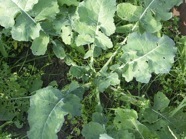
TZIMBALO
This is still a mystery to me, even after a few years of growing out plants, I still don’t know if ripe berries should be green, yellow, yellow-orange or even orange (I’ve seen pictures of all these varieties, but my berries always stay green ). Or maybe these are all different varieties? I tasted some of the green berries, who had a little shade of yellow over them, and they didn’t taste bad, but still a bit acid..
Tzimbalo (solanum caripense) needs temperate warmth to grow well, this is one of the ancestors of pepino , probably together with solanum tabanoense, this last one is very rare, I never saw a picture of it. Besides the warmth, tzimbalo loves a bit of water from time to time.


